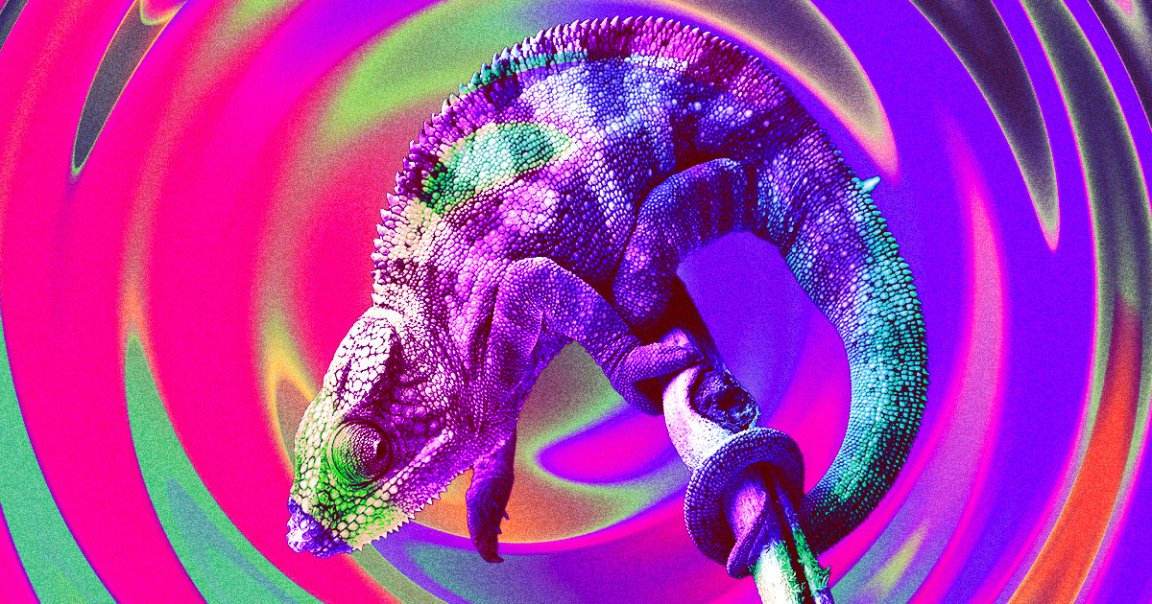
Diva Down
What a way to go.
A new PBS documentary titled “Big Little Journeys” captured the final moments of a rare Madagascan chameleon as she broke into a vibrant, pulsating display of color just moments before her death — a magnificent, if tragic, sight never previously observed in the wild.
“In her last moments, her skin erupts with color,” series narrator Bumper Robinson says in the video, in which the reptile’s skin can be seen lighting up in mesmerizing patches of reds, purples, blues, and yellows, “as if uttering her last words.”
A Lizard Life
Per Live Science, this gone-too-soon reptilian was a Labord’s chameleon, a species that’s long fascinated scientists due to its extremely short lifespan. Most chameleon species can live naturally for anywhere from two to seven years, with larger species like the Parson’s chameleon pushing upwards of ten to 14. After hatching, Labord’s chameleons only live four to five months — as Live Science points out, that’s one of the shortest known lifespans of any four-legged vertebrate, let alone the shortest of any other chameleon species.
Fascinatingly, according to the researchers, the Labord lizards’ deathly display is believed to be caused by their still-firing nervous systems, which continue to send signals to skin cells in the critters’ last moments.
“During death,” Fabbri-Kennedy and Raxworthy told Live Science, “nervous signals continue to transmit and to change the shape of the skin cells, creating the chaotic technicolor patterns that were captured.”
Eggxiety
But the drama of this herpetological diva’s death — which was filmed in the Kirindy Forest in western Madagascar — doesn’t end with the technicolor show. Female Labord chameleons die shortly after laying their eggs; in the clip, this female can be seen using her last few ounces of energy to bury her fragile eggs in the sand to protect them from the approaching dry season.
“The females put all their energy into producing eggs that need to get through the long drought while underground,” series producer Valeria Fabbri-Kennedy and American Museum of Natural History herpetologist Chris Raxworthy told Live Science. “They die within just a few hours of having laid them, as they have few resources left.”
And though they can’t chalk it up to the egg-laying of it all, the male Labord chameleons live just as long as the females do — meaning that for the majority of their development, the Labord population’s next generation is only as protected as a layer of sand. Anxiety-inducing, but also kind of metal!
Anyway. RIP, queen. Your last moments were spectacular — and here’s to the next generation.
More on lizards: Asexual Lizards Stressed by Military Overeating to Cope, Scientists Say